Dealing with those hot, sun-drenched spots in your garden can feel like a landscaping puzzle. But what if the solution was as simple as choosing the right plants?
We've pulled together a list of 39 sun-loving, heat-embracing plants, tailor-made for these tough conditions.
Let's turn those challenges into opportunities and bring life to your garden's sunniest areas. Get ready to explore these resilient champions of sun and heat!
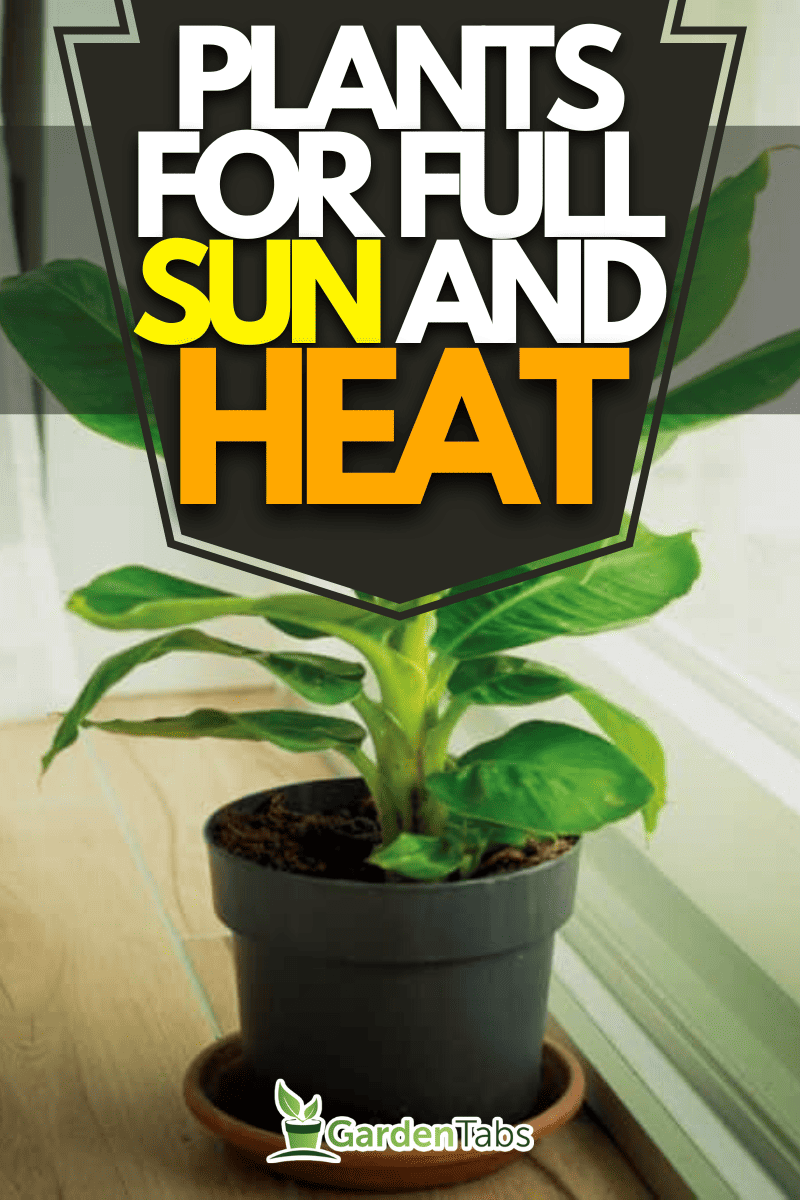
1. Banana Plant (Musa spp.)
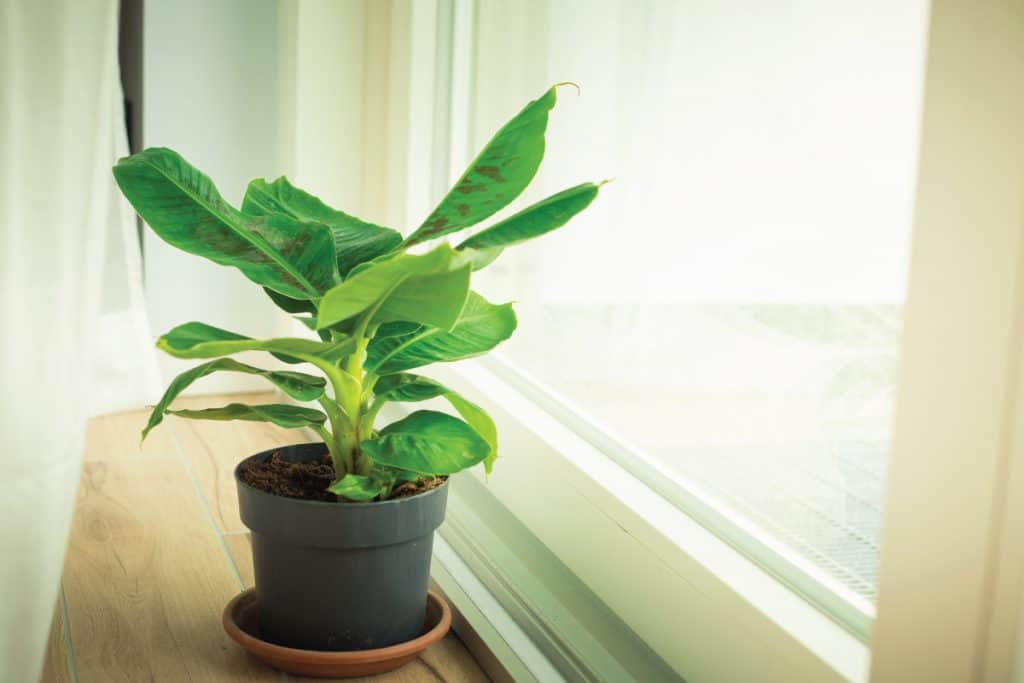
A banana plant, while thought of as a tree, is indeed a large herb. There are many varieties of banana plants, reaching heights between 1.5 and 25 feet. The leaves are luscious and green. Banana plants grow best in USDA plant hardiness zones 9 and 10 but can tolerate other zones if properly protected from the cold. Plant them in full sun.
2. Lantana (Lantana camara)
Lantanas grow upright, reaching 6 feet tall and wide. The blooms are available in multiple colors, including white, pink, yellow, orange. The tiny blooms are in clusters, providing color for months on end.
Pick a spot with full sun and well-draining, slightly acidic soil. They’re tolerant of dry conditions but perform best with a deep soaking each week. Plant lantana in USDA plant hardiness zones 6-11.
3. Verbena (Verbena officinalis)
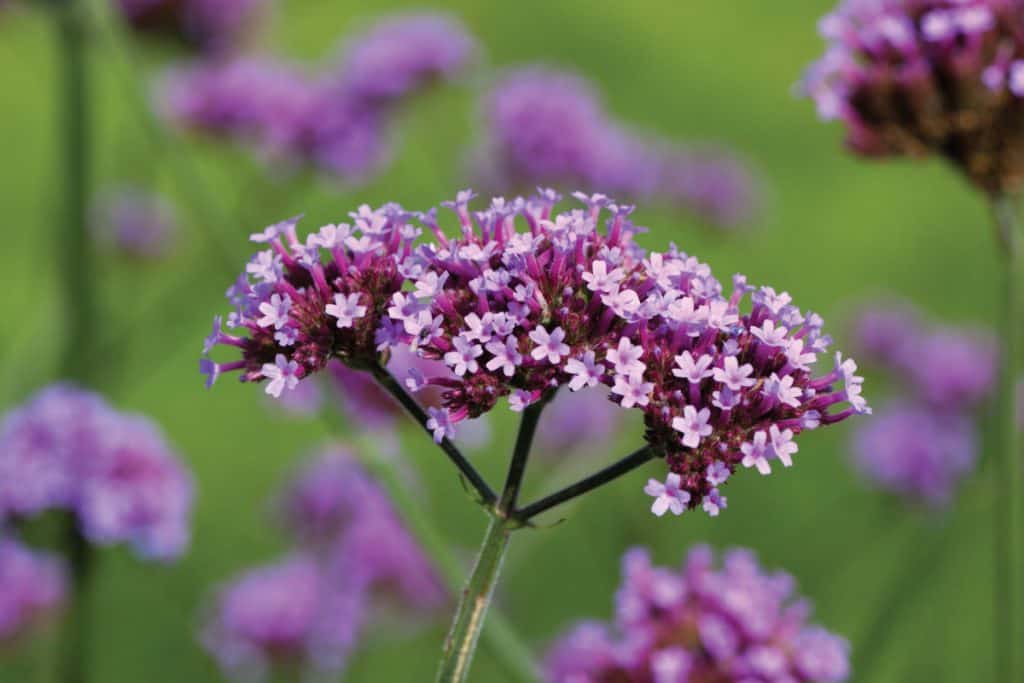
Verbena is a long-lasting bloomer that has multiple habits of growth: trailing, upright, and low-growing. The small flowers grow in clusters in colors of pink, red, purple, coral, and bi-colored.
If you have a super sunny and dry area in your garden, this is where you should plant your verbena. The soil must be well-draining, but can be composed of nearly anything. Weekly watering keeps the blooms active and full. It's suitable for USDA plant hardiness zones 8-11.
4. Cosmos (Cosmos spp.)

Cosmos look similar to the blooms of daisies with their tall upright habit of growth and large blooms. The bloom colors are available in shades of pink, white, yellow, orange, red, and maroon. They're very hardy plants, doing well in USDA plant hardiness zones 2-11. Plant them in a spot with full sun and well-draining soil.
5. Marigold (Tagetes spp.)

Marigold flowers are in beautiful orange and yellow hues with carnation-like flower heads. Depending on the variety, marigolds reach a height between 1 and 4 feet. Find a spot with full sun and lots of heat for the best marigold blooms. These flowers perform best in USDA plant hardiness zones 3-11.
Read more: Do Deer Eat Marigolds? [And How To Prevent That]
6. Coneflower (Echinacea)

Coneflowers have a unique appearance with their raised cone-like flower center. The daisy-like blooms come in shades of orange, yellow, pink, white, and red. The flowers reach a height between 2 and 4 feet. These flowers do best in USDA plant hardiness zones 3-9 and a spot with full sun.
7. Russian Sage (Perovskia atriplicifolia)
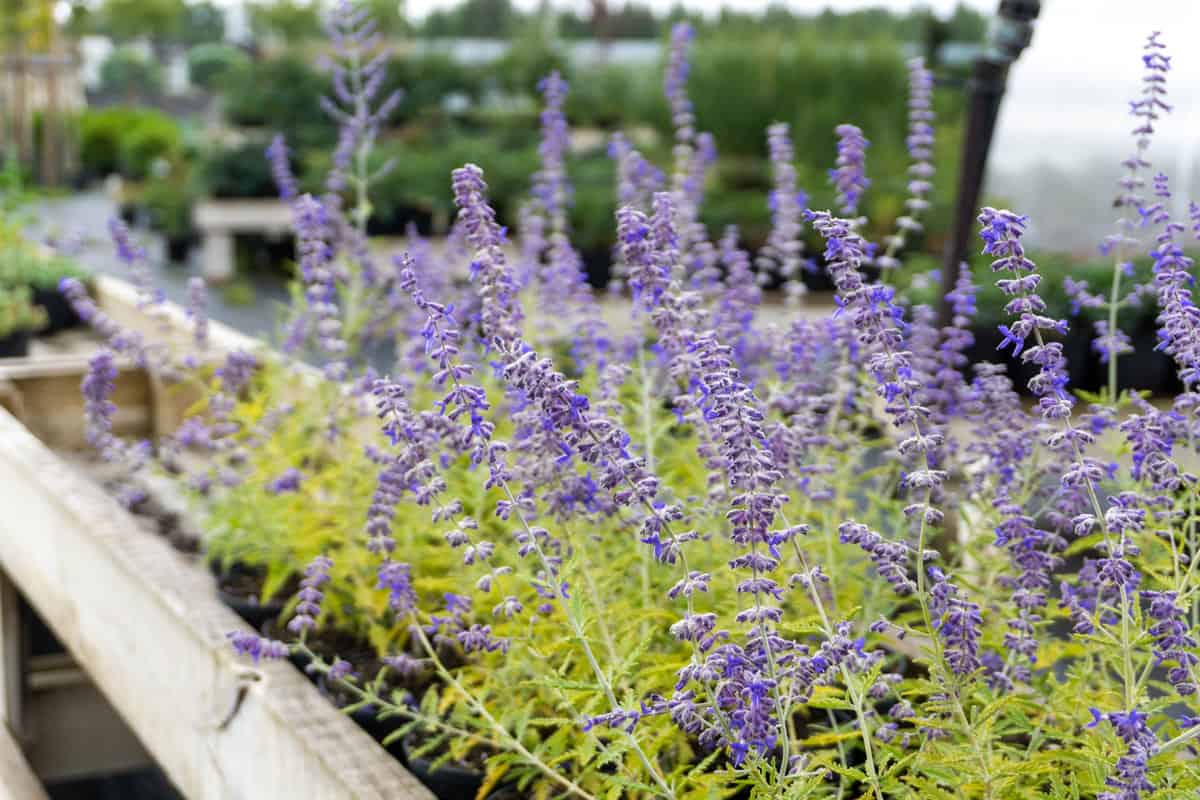
If you want a beautiful silvery-purple plant in your garden, look no further than the Russian sage. The flowers grow on spikes and reach a height of 4 feet. You can plant Russian sage in USDA plant hardiness zones 5-10. Make sure it's located in a spot with full sun and dry soil.
8. Poppy (Papaver orientale)
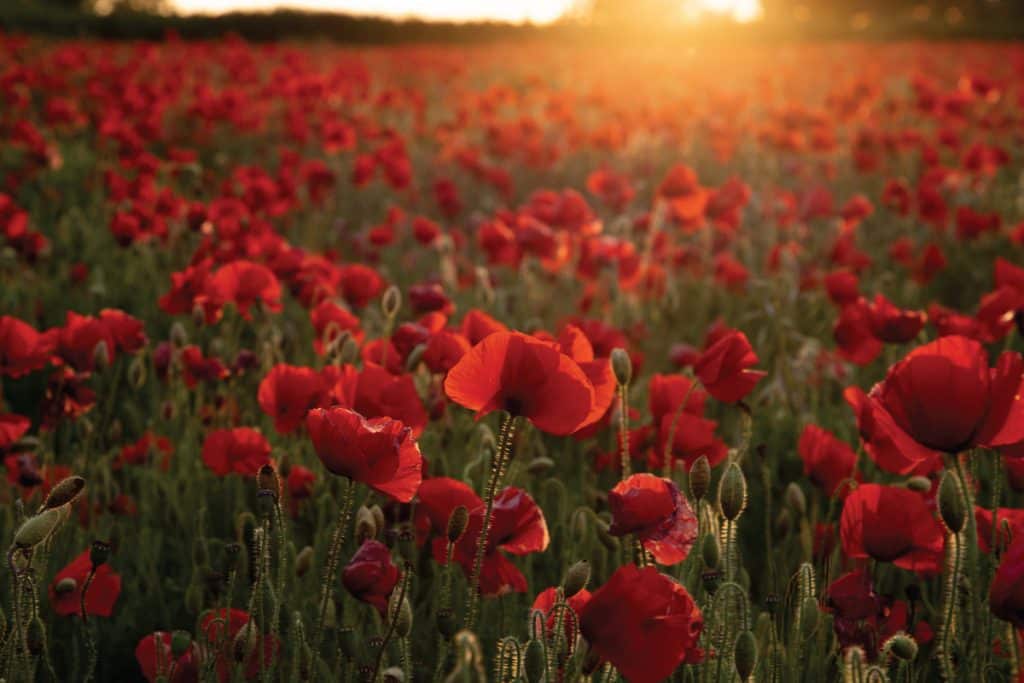
Poppies are a popular colorful flower with single or double blooms. You'll enjoy warm shades of orange, pink, yellow, and red in your poppy blooms. Full sun and well-draining moist soil are best for the success of growing poppies. Plant them in USDA plant hardiness zones 3-8.
9. Starflower (Trientalis borealis)

The starflower is a wildflower that's easily recognized by its dainty star-shaped blooms. Its blooms can be seen in shades of lilac, white, and mixed. The plant grows between 12 and 18 inches tall. Starflowers are suitable for USDA plant hardiness zones 6-10. Find a sunny spot with well-draining soil for these flowers.
10. Geraniums (Pelargonium)
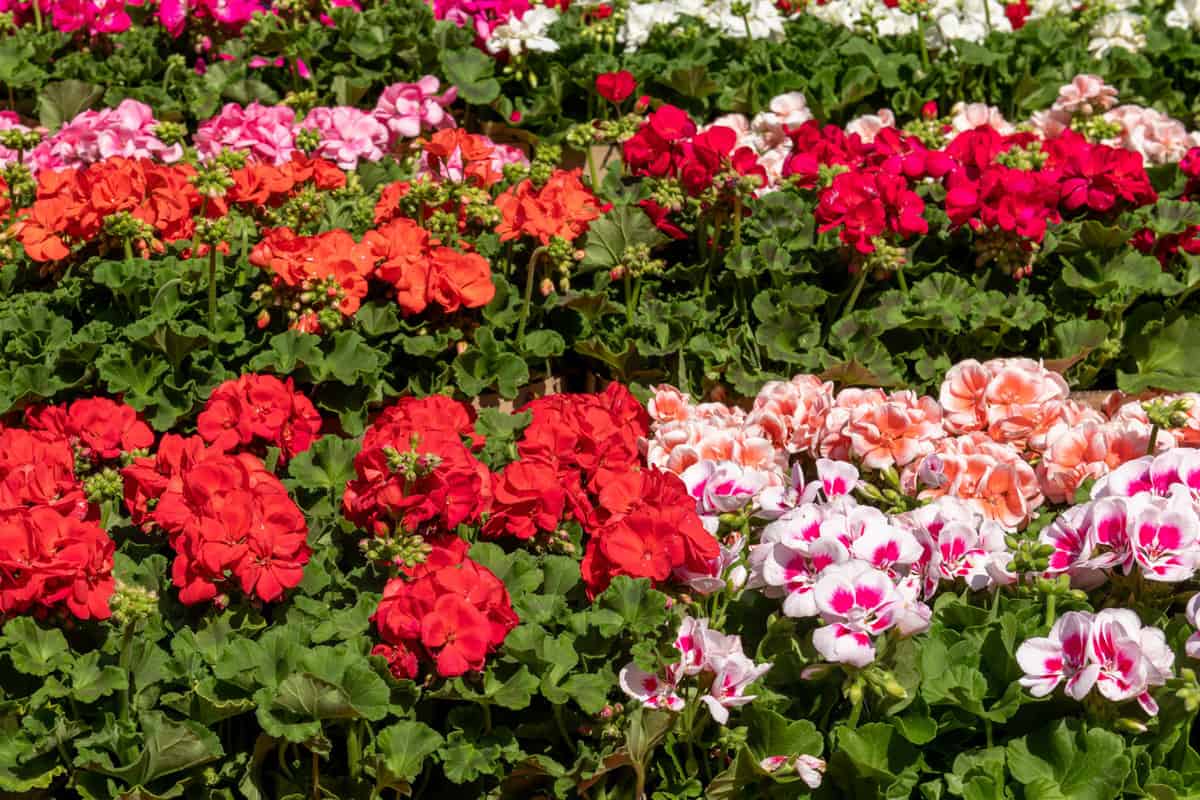
Geraniums are a popular flower choice for their attractive foliage and blooms. The green scalloped leaves pair well with the clusters of red, white, or pink blooms. Perennial and annual geraniums love a good sunny spot in the garden. They do best in USDA plant hardiness zones 10-11.
Read more: How To Grow Geraniums [Care Tips, Pictures, And More]
11. Daisy (Leucanthemum × superbum)
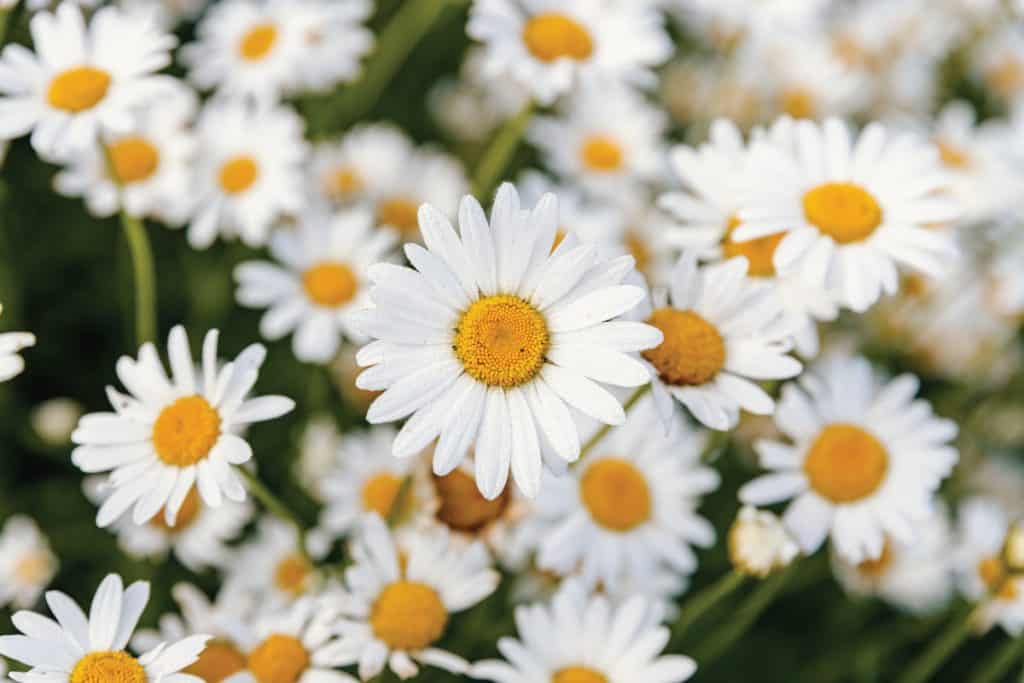
A daisy is a simple yet beautiful flower. Daisies grow in clumps that are 2-3 feet tall and 1-2 feet wide. Its white serrated petals have a sunny yellow center. Average, well-draining soils are a great fit for daisies. They should be planted in USDA plant hardiness zones 4-9.
12. Black-Eyed Susan (Rudbeckia hirta)
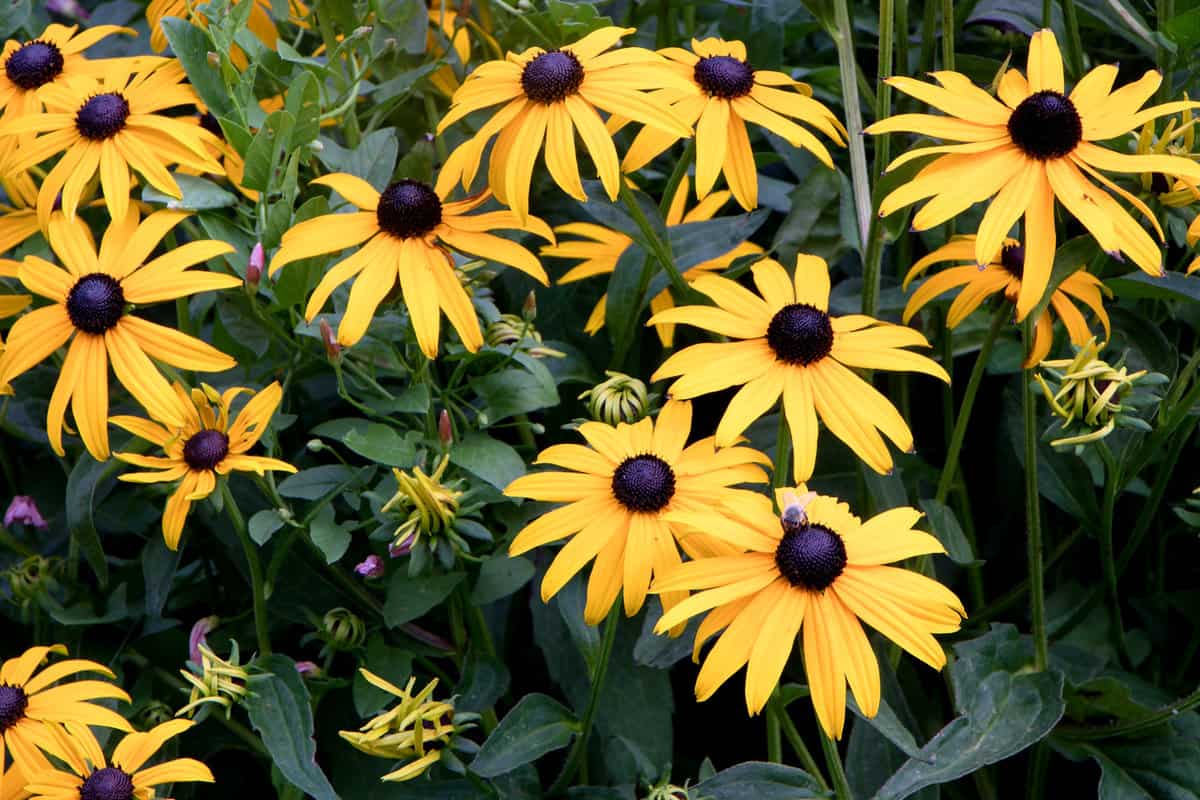
Black-eyed Susans feature bright yellow petals with a black center. At maturity, these plants can reach 2-3 feet tall. These plants do best in USDA plant hardiness zones 3-7. Full sun and well-draining soil are ideal for their performance. While they do best in full sun, they can tolerate some shade.
13. Euphorbia (Euphorbia spp.)

If you want a plant with intriguing foliage, give euphorbia a try in your garden. The hardy plants have rich-colored foliage in shades of burgundy, eggplant, blue-green, and copper. Euphorbia does well in USDA plant hardiness zones 4-10 with full sun and well-draining soil.
14. Bamboo (Bambusoideae)
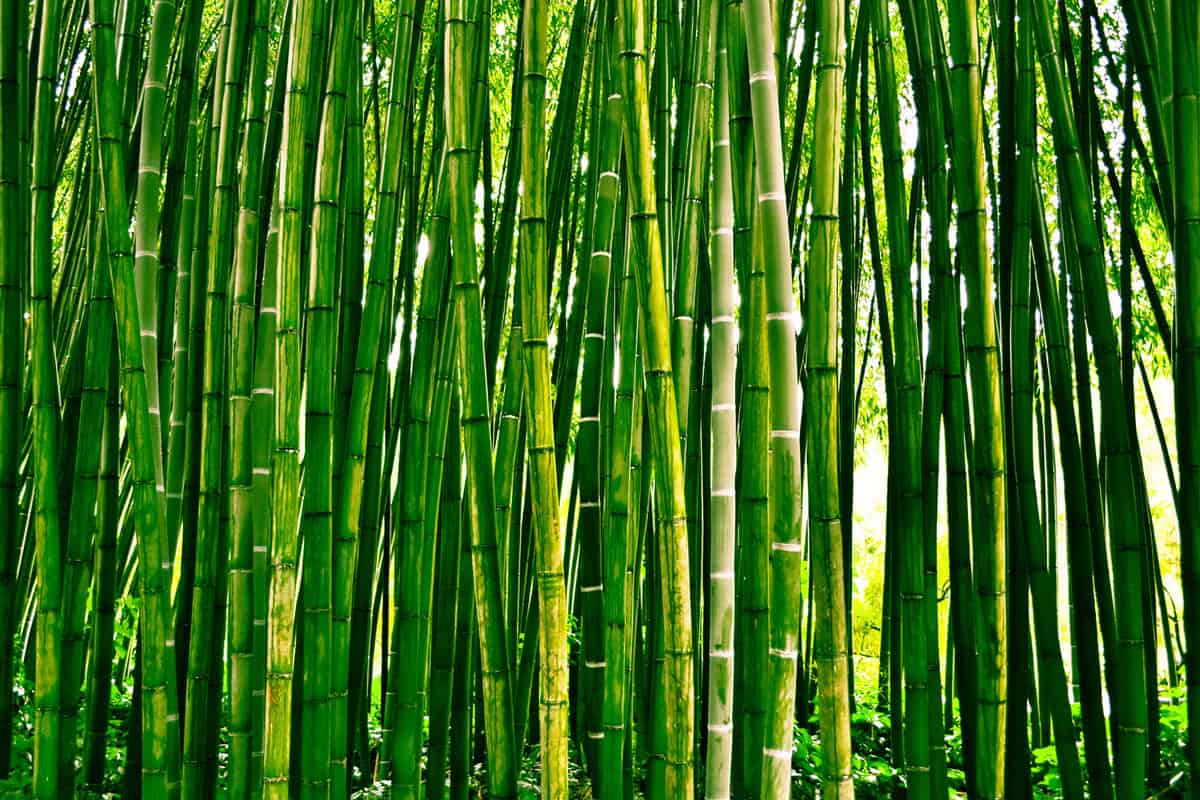
Bamboo can either be running or clumping; clumping bamboo is the better option as running bamboo is considered invasive. It can grow a few feet each year, depending on its growing conditions. The larger the variety of bamboo, the more sun it will require. It can grow in USDA plant hardiness zones 5 and warmer.
15. Canna Lily (Canna indica)

Canna lilies are tropical plants with their luscious green leaves and colorful blooms. Depending on the variety, cannas can grow to heights between 2-8 feet. These plants perform best in full sun with moist soil. Full sun allows their blooms to reach their full growth and color potential.
16. Mandevilla (Mandevilla spp.)
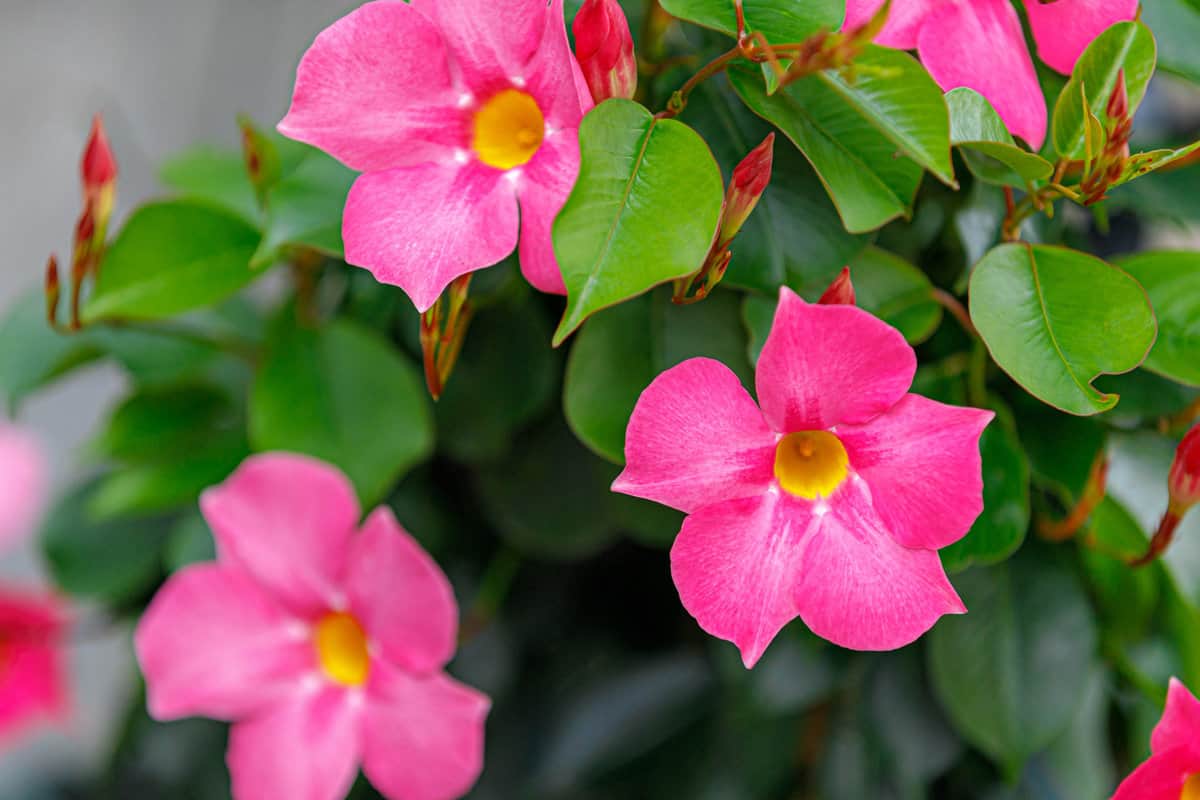
Another great tropical-looking plant is mandevilla. It's a vining plant with large trumpet-shaped blooms. While these plants enjoy sunlight, they like it with some filtration. They can burn if they're in direct sunlight for too long. Plant mandevilla in USDA plant hardiness zones 9-11.
17. Blanket Flowers (Gaillardia)
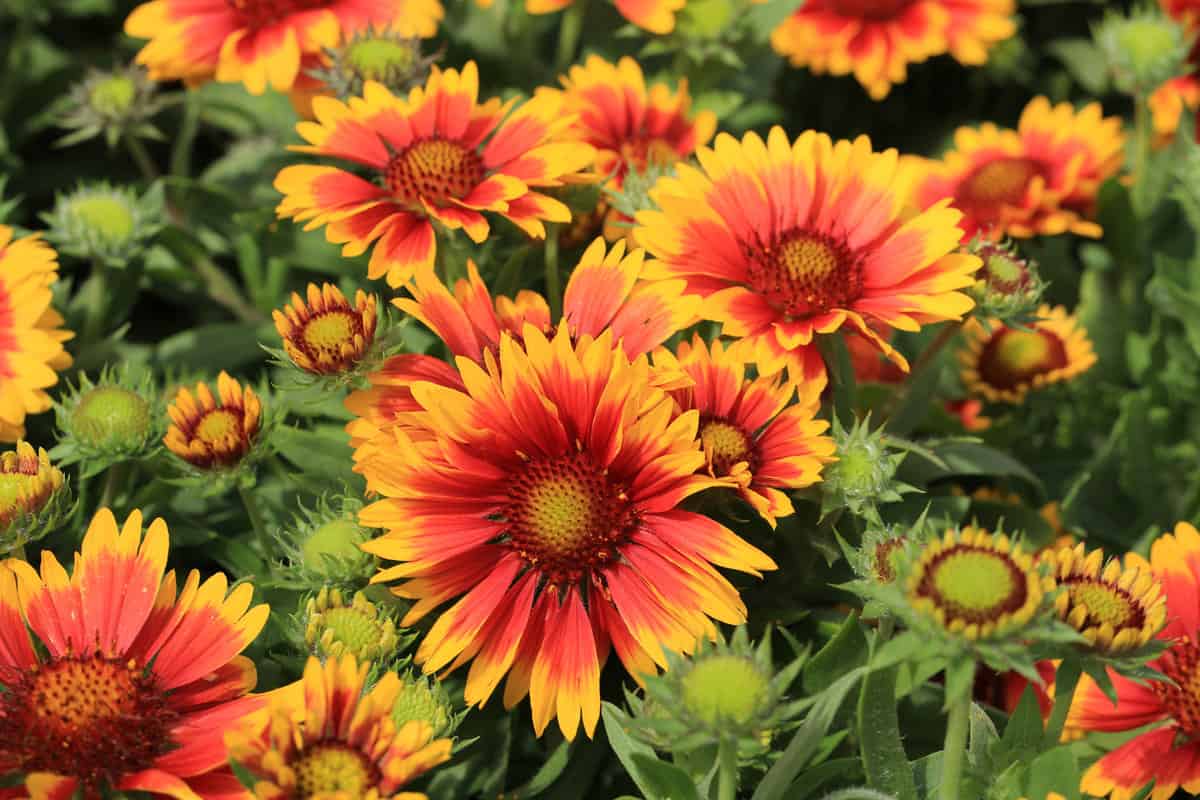
These flowers are daisy-like in form but feature an ombre pattern of red, orange, and yellow in their petals. It grows in a spreading mound and reaches a height between 12 and 18 inches. Plant these flowers in USDA plant hardiness zones 3-10. They thrive in full sun.
18. Passion Flower (Passiflora spp.)

The passion flower is one of the most unique-looking flowers. The blooms are extremely intricate and feature a variety of textures and colors. The vines can reach an astounding length of 30 feet. These plants perform best in USDA plant hardiness zones 9-11. Make sure the plant has full sun.
19. Hibiscus (Hibiscus rosa-sinensis)
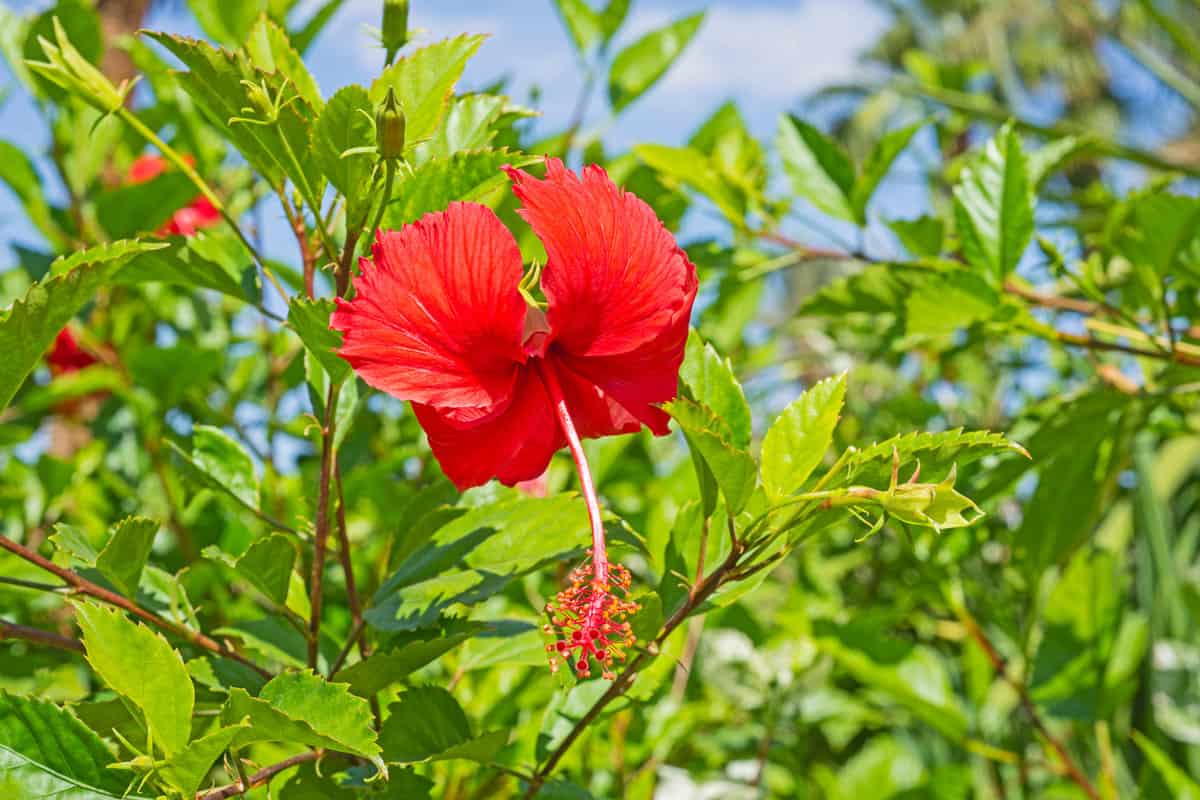
Hibiscus is a gorgeous tropical plant that features large, colorful blooms. Expect to see the flowers in shades of pink, yellow, white, orange, red, and bi-colors. The blooms stand out against the dark green foliage. Hibiscus needs a spot with full sun and moist, well-draining soil. They do well in USDA plant hardiness zones 4-9.
20. Plumbago (Plumbago auriculata)
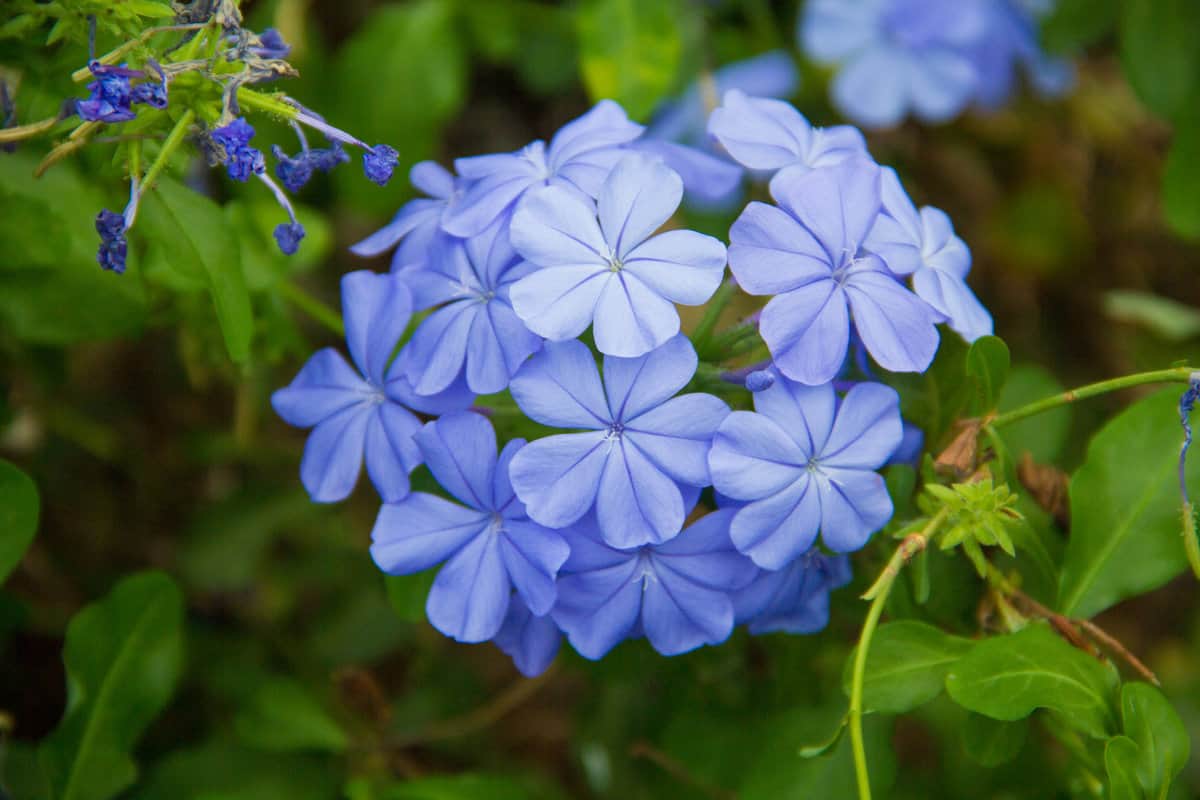
This flowering shrub can grow to a height between 6 and 10 feet tall. The blooms grow in clusters and feature soft shades of blue. As an added bonus, it's very pest-resistant. This plant thrives in the heat and sun, so find a good spot for it in your garden. It does well in USDA plant hardiness zones 9-11.
21. Tropical Milkweed (Asclepias curassavica)

Tropical milkweed grows to a shrubbing height between 3 and 4 feet. It has clusters of small red and orange flowers. And if you love Monarch butterflies, this plant is a must-have for your garden as it is great for pollinators. It does well in USDA plant hardiness zones 8-11.
22. Columbine (Aquilegia)
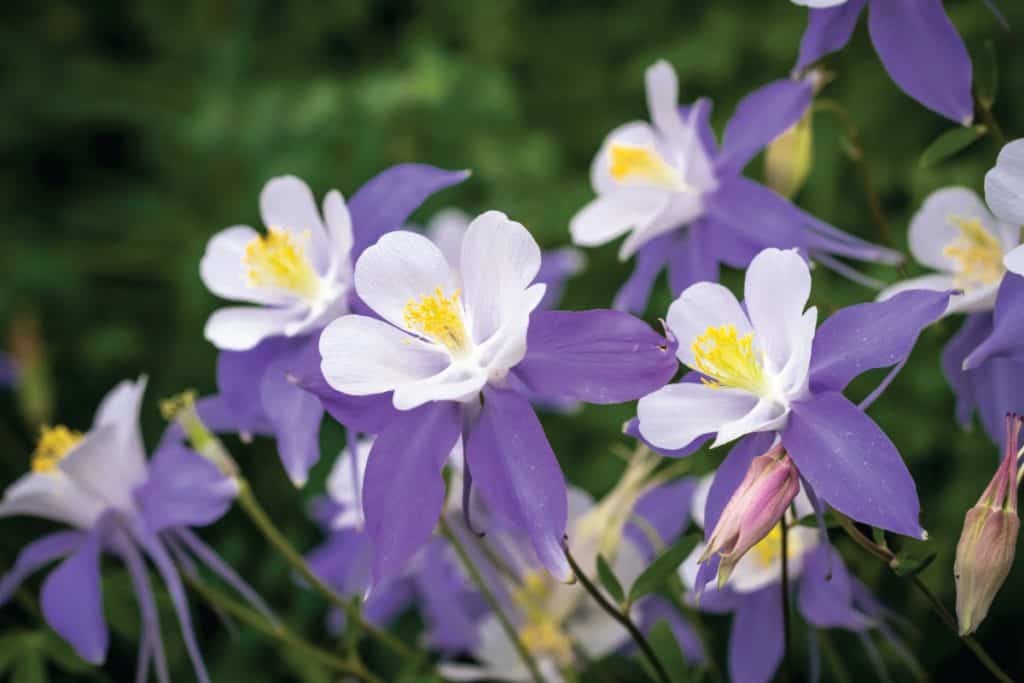
Columbine plants feature bell-shaped blooms in shades of red, orange, yellow, purple, and other bi-colors. At maturity, it can reach a height between 1 and 3 feet. This beautiful flower performs well in USDA plant hardiness zones 3-9. As long as the plant has well-draining soil and sunshine, it will thrive.
23. Butterfly Weed (Asclepias tuberosa)

Butterfly weed is similar to milkweed plants as their blooms are full of nectar and very attractive to pollinators. Their bright orange and yellow blooms grow in clusters. At maturity, they can reach heights between 12 and 36 inches. They perform best in USDA plant hardiness zones 3-9 with lots of sunlight.
24. Wax Begonia (Begonia x semperflorens-cultorum)

The waxy foliage of a begonia is accompanied by bright blooms in colors of red, white, or pink. Depending on the variety of wax begonia you get, they'll reach heights between 6 inches and 2 feet. As perennials, wax begonias can live in USDA plant hardiness zones 10-11. Place them in a spot with lots of sunlight.
25. Rosemary (Rosmarinus officinalis)
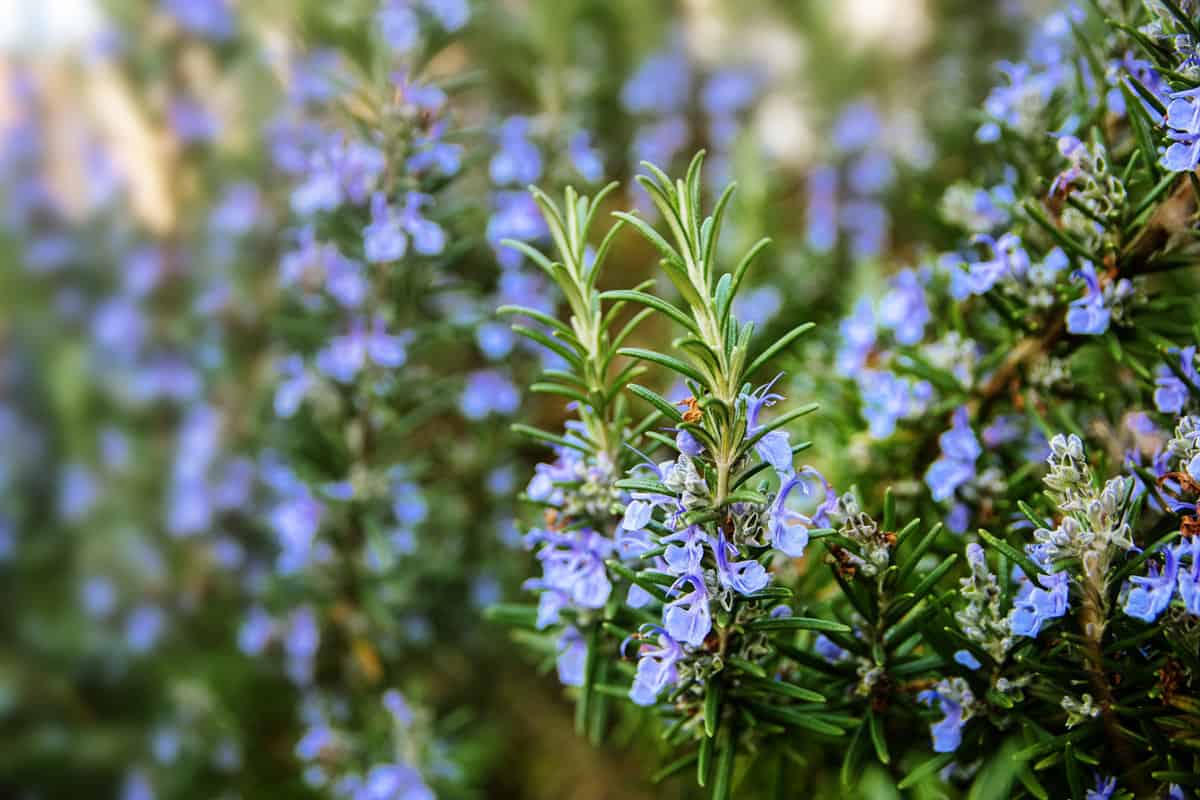
Rosemary is a wonderfully-scented perennial herb that grows in a shrub-like form. The aromatic herb features dainty blue flowers in the spring months. Rosemary plants perform best in USDA plant hardiness zones 7-10. Lots of sunlight and well-draining soil are a must. Water them regularly, but allow the soil to dry out between waterings.
26. Lavender (Lavender angustifolia)

By simply reading the name of this plant, you can probably already imagine the calming scent. The scent of lavender is very distinct, offering a great aroma. It features upright flower stems with soft purple blooms. The plant can reach heights between 2 and 3 feet. It's hardy in USDA plant hardiness zones 5-8.
27. Fall Aster (Symphyotrichum spp.)
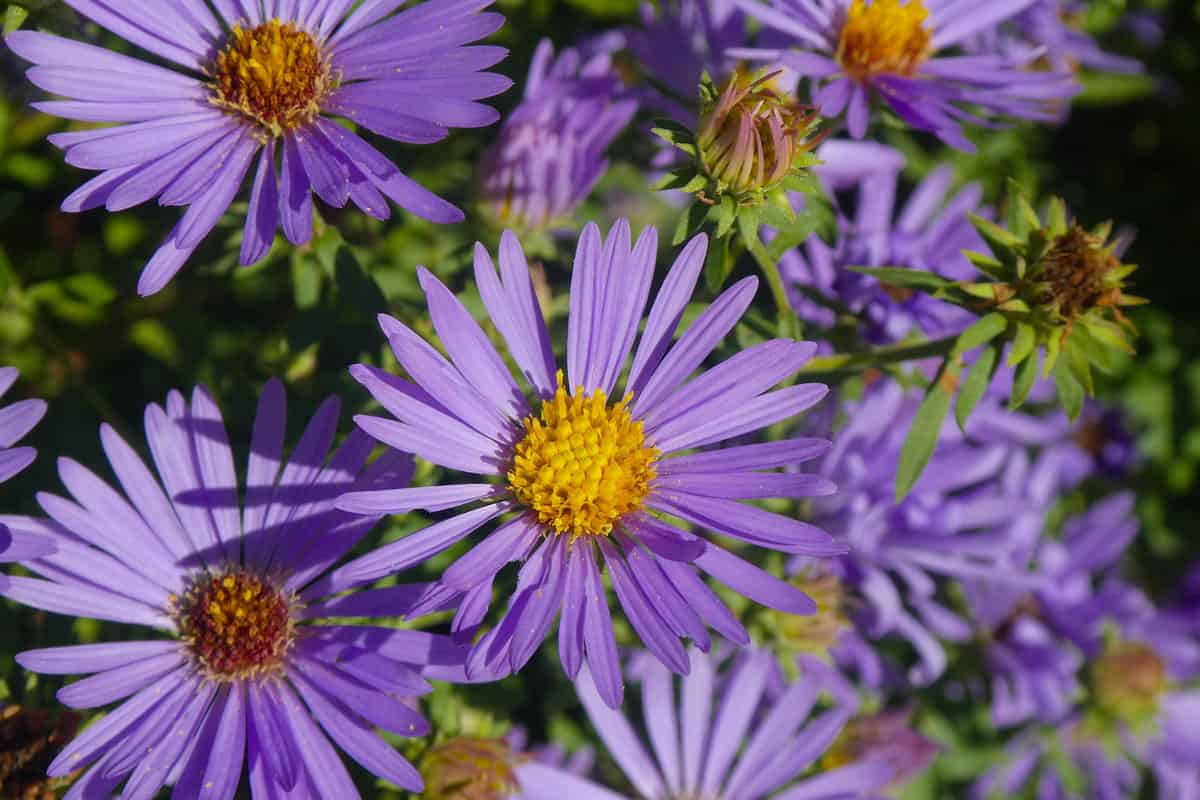
This plant is another daisy lookalike with its tall, slender stems and starry flower heads. Bloom colors come in a wide variety, including white, pink, magenta, and lilac-blue. Depending on the variety, the plant can reach heights between 8 inches and 8 feet. It does best in USDA plant hardiness zones 3-8.
28. Firebush (Hamelia patens)
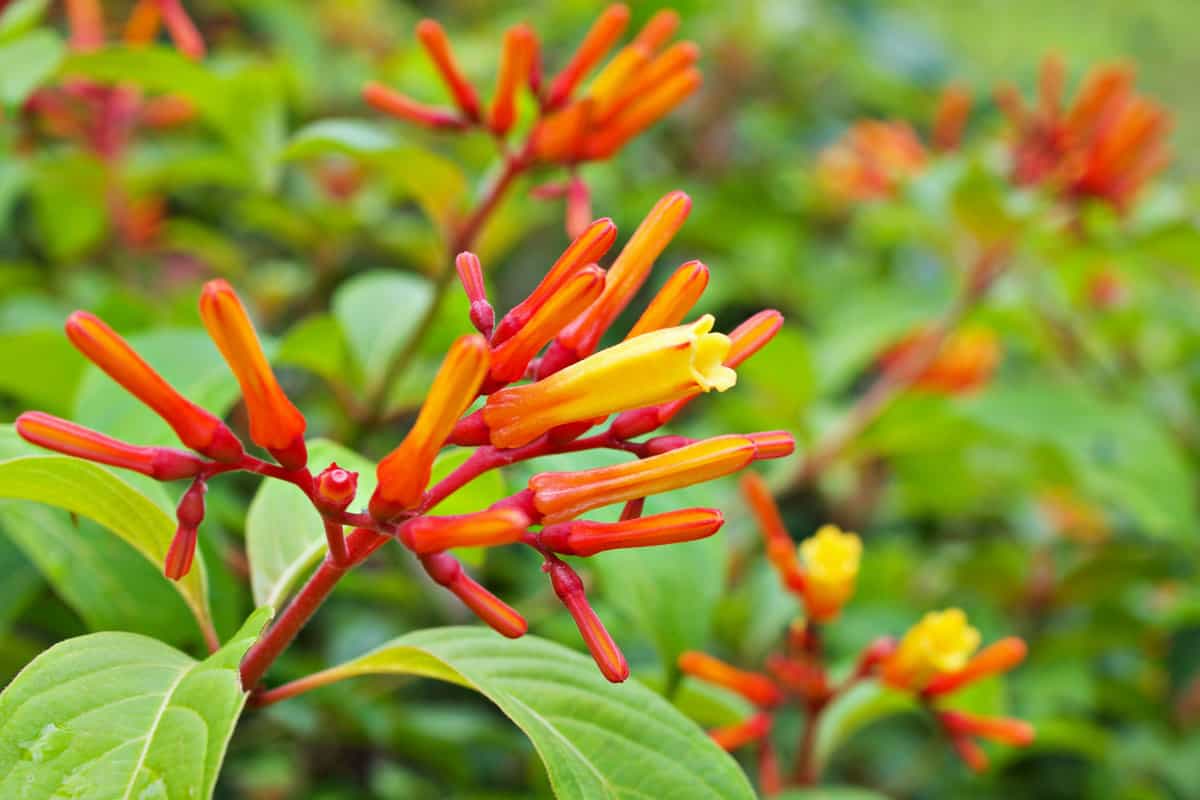
The firebush plant features vibrant green foliage and tubular-shaped orange blooms. It's quite an interesting-looking plant. Amazingly, if left on its own, it can grow up to 15 feet tall. It can be grown in USDA plant hardiness zones 8-11. It's very good at tolerating both heat and drought conditions.
29. Rockrose (Cistus)
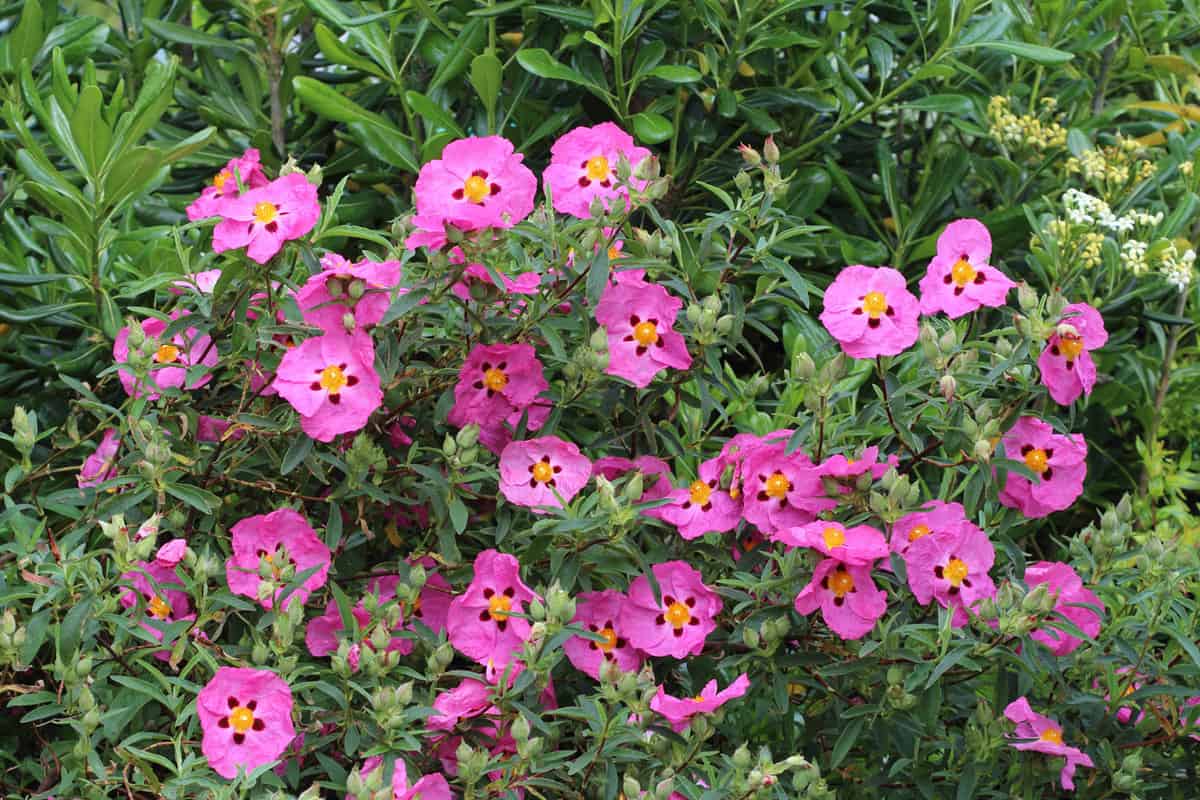
The rockrose plant is a flowering evergreen shrub that features beautiful blooms. Its blooms are papery in appearance and come in shades of pink, yellow, and white. At maturity, they can reach between heights of 3 and 5 feet. They do best in USDA plant hardiness zones 6-10.
30. Pentas (Pentas lanceolata)

Pentas are practically a garden staple. These plants show off colorful star-shaped blooms in shades of pink, purple, white, or red. The shrubbing plant can reach 6 feet in height. They can grow as perennials in USDA plant hardiness zones 10 and 11. They can survive even the hottest of summers.
31. Celosia (Celosia spp.)
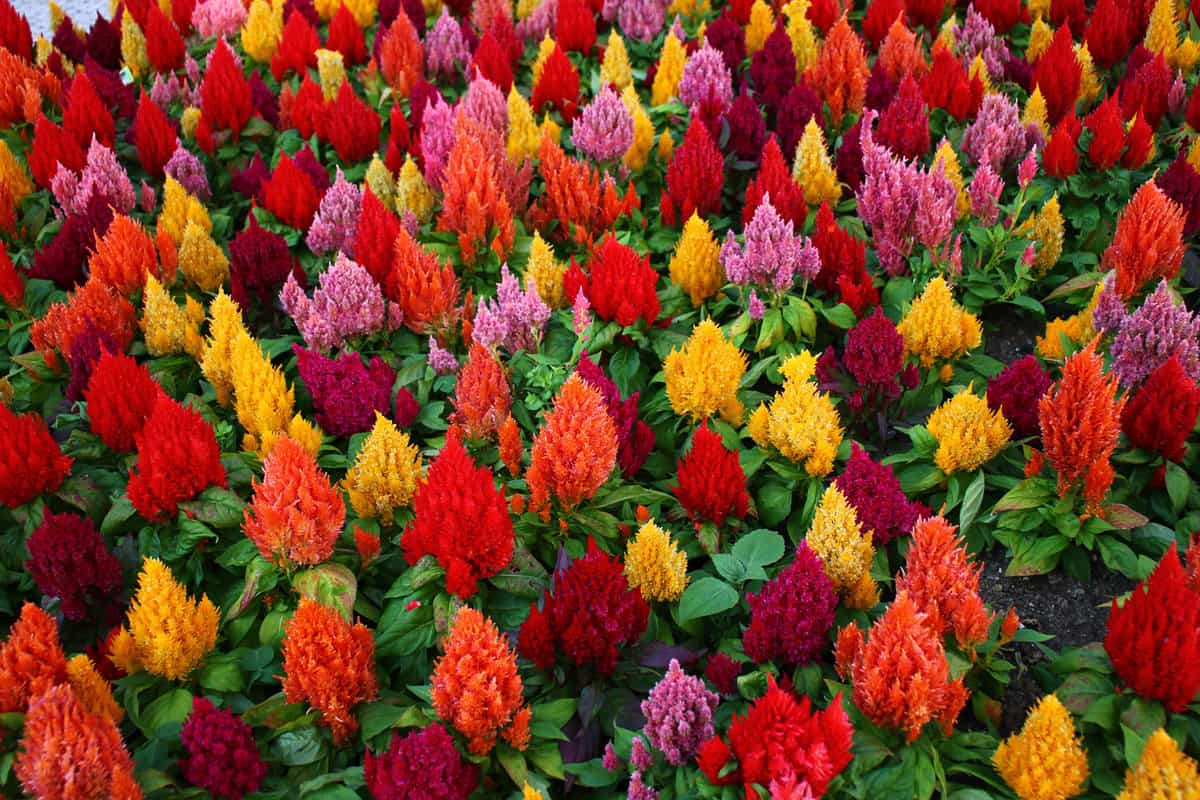
If you want an incredibly unique-looking plant in your garden, look no further than the celosia plant. Its bright velvety form is exotic. It can be found in shades of yellow, pink, red, and orange. While it's native to tropical regions, it's hardy in USDA plant hardiness zones 2-9 as an annual.
32. Globe Amaranth (Gomphrena globosa)
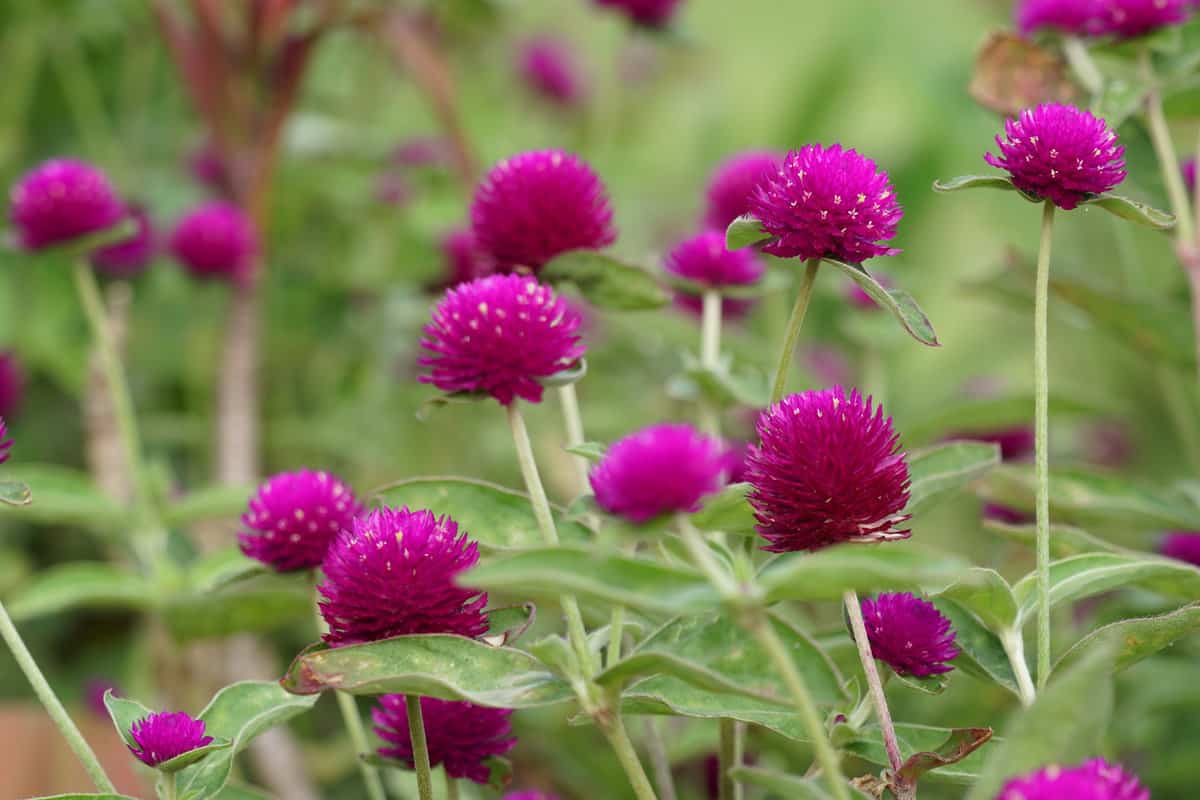
This plant features intriguingly round blooms that extend from slender stems and broad green leaves. The blooms are available in shades of purple, pink, white, and yellow. Lucky for you, these plants do well in all hardiness zones. Full sun and well-draining soil help this plant thrive.
33. Salvia (Salvia spp.)

Salvia plants are aromatic and can be grown as annuals or perennials, depending on your region. The flowers grow on long stalks and can be seen in shades of pink, purple, red, white, yellow, and even blue. They can reach heights between 1.5 and 5 feet, depending on the variety. All varieties of salvia perform well with full sun and well-draining soil. They are hardy in USDA plant hardiness zones 5-10.
34. Portulaca (Portulaca grandiflora)
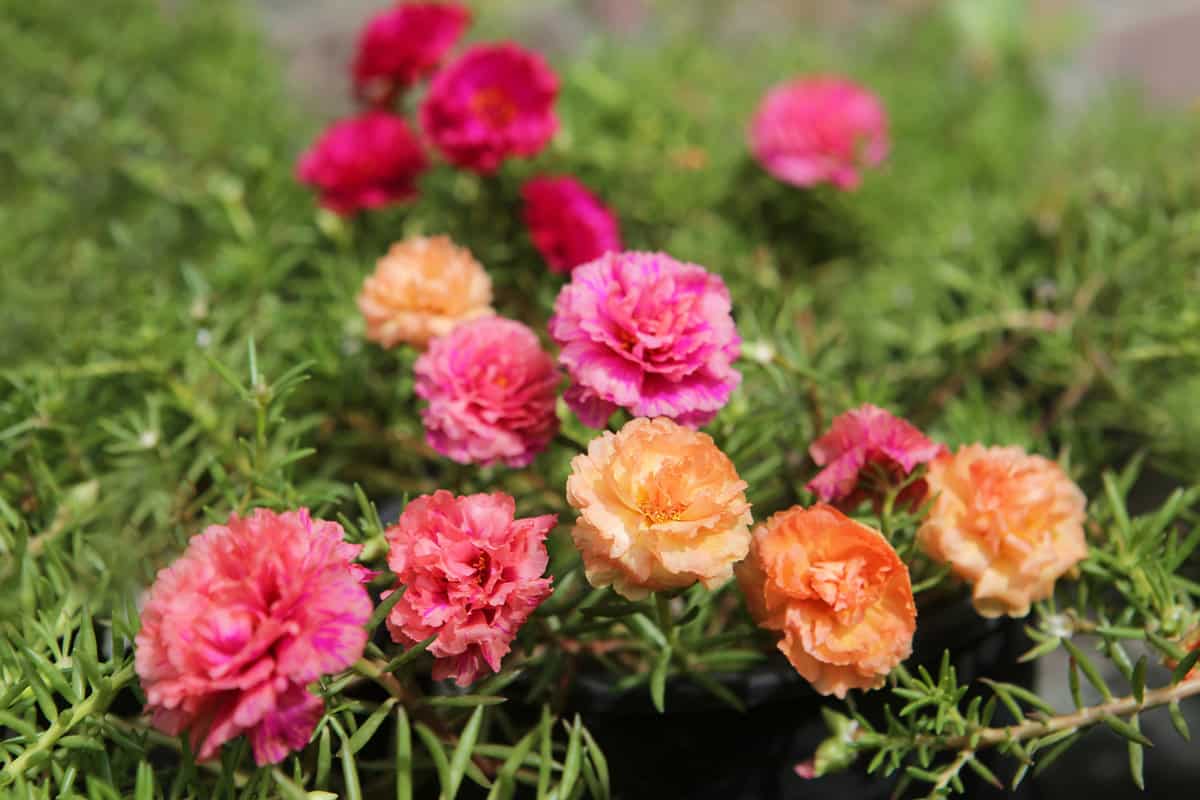
The portulaca plant features succulent leaves and bright-colored blooms in shades of pink, yellow, orange, white, and red. At maturity, these plants will only reach between 3 and 9 inches tall. As long as the portulaca gets full sun and well-draining soil, it will do well. It performs best in USDA plant hardiness zones 2-11 as an annual.
35. Crape Myrtle (Lagerstroemia indica)
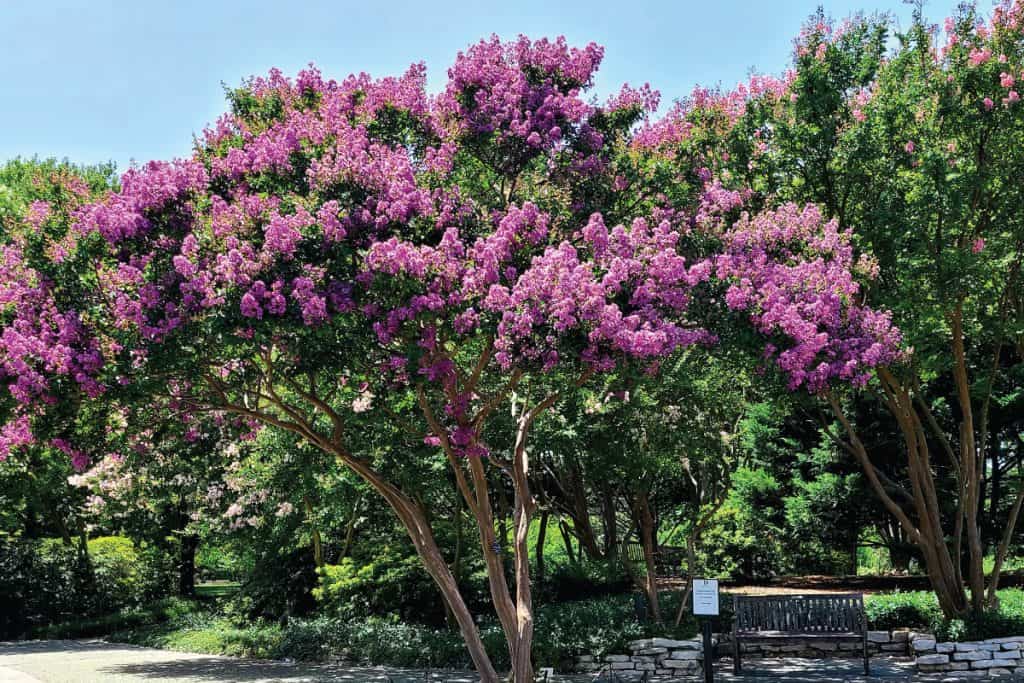
The crape myrtle is a well-loved plant that can grow like a shrub or a tree, depending on the variety. Its colorful crepe-like clusters of blooms are available in shades of white, pink, red, and purple. They can be grown in USDA plant hardiness zones 6-10.
36. Angel's Trumpet (Brugmansia)
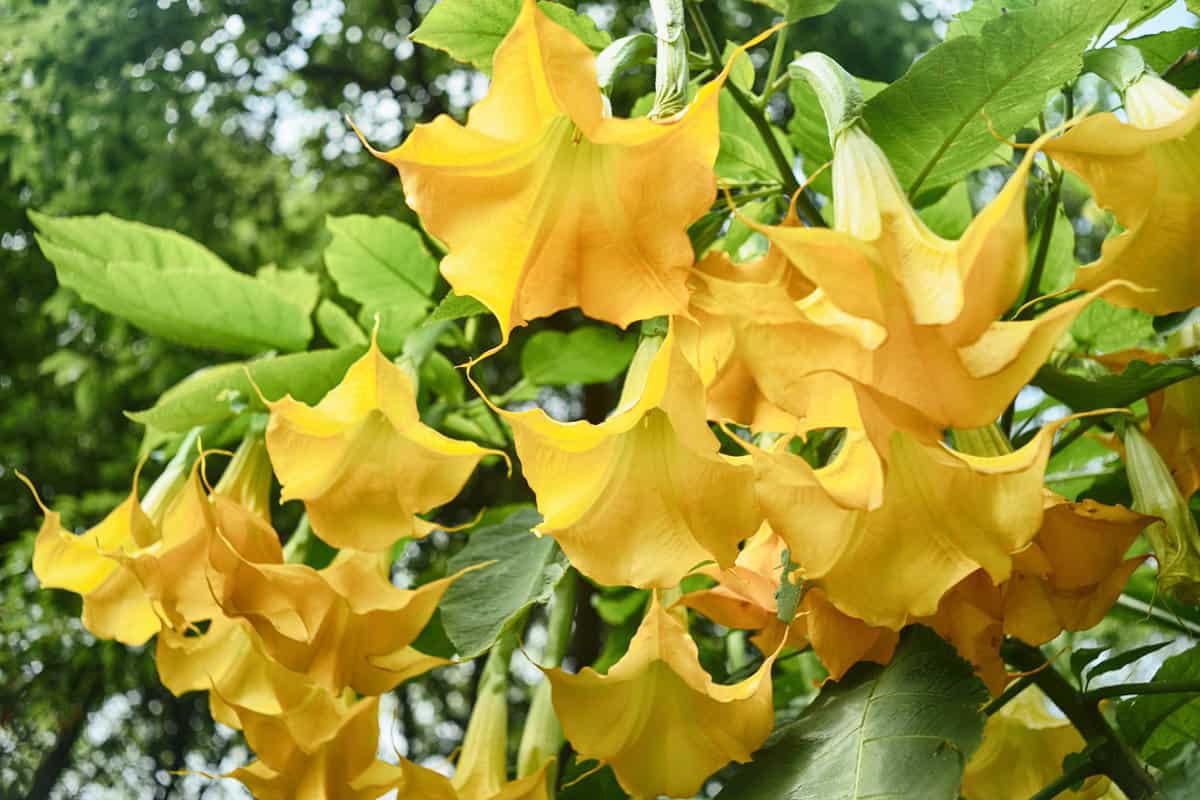
Angel's Trumpet is known for its gorgeous droopy yellow blooms that resemble a trumpet. This tropical plant thrives in hardiness zones 9-11. It prefers acidic soil and full sun. When fully grown, this plant can reach a staggering 20 feet in height. Take care, however, because this plant is toxic.
37. Angelonia (Angelonia spp.)
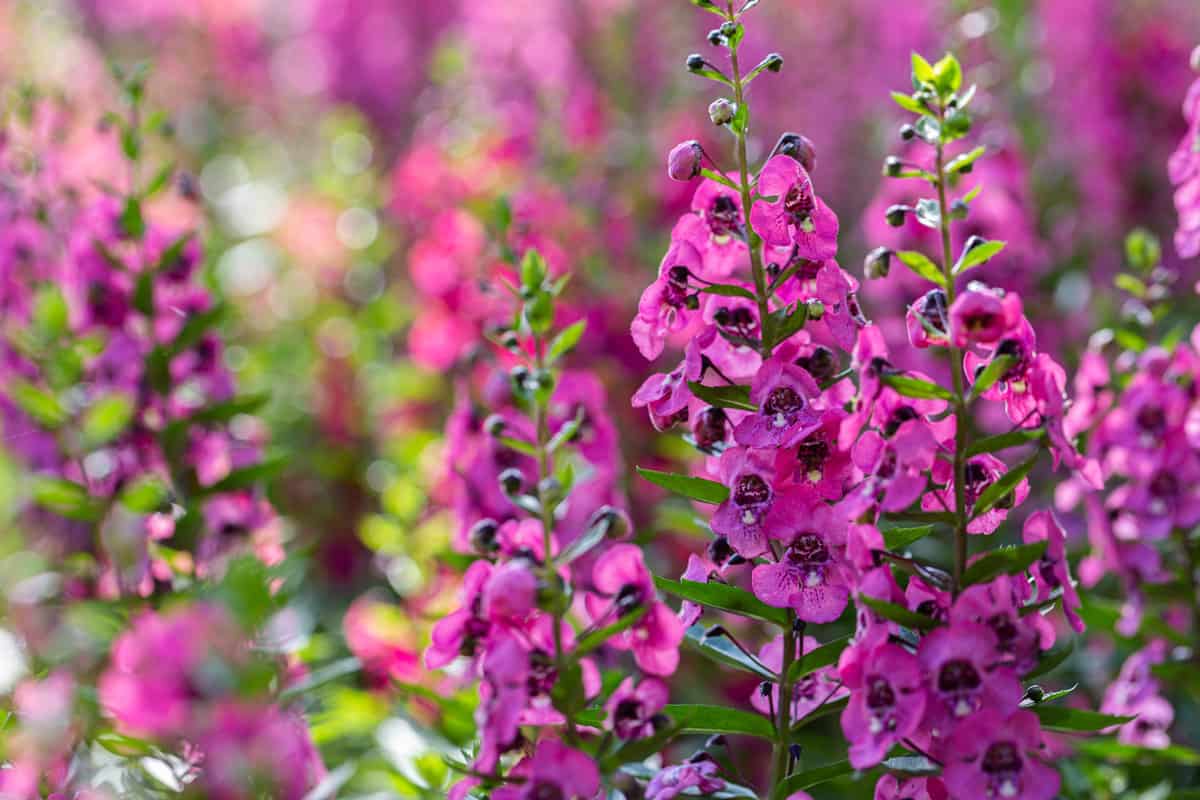
Angelonia is a beautiful plant with vibrant purplish flowers. In hardiness zones 9-11, the Angelonia can thrive year round. This plant does well in pots and planters, and when fully grown, it can reach between 12 and 18 inches in height.
38. Sedum (Sedum spp.)

Sedum is known for its dainty pinkish blooms. The plant does best in hardiness zones 4-9. When fully grown, Sedum can reach 1 to 3 feet in height.
39. Coreopsis (Coreopsis spp.)
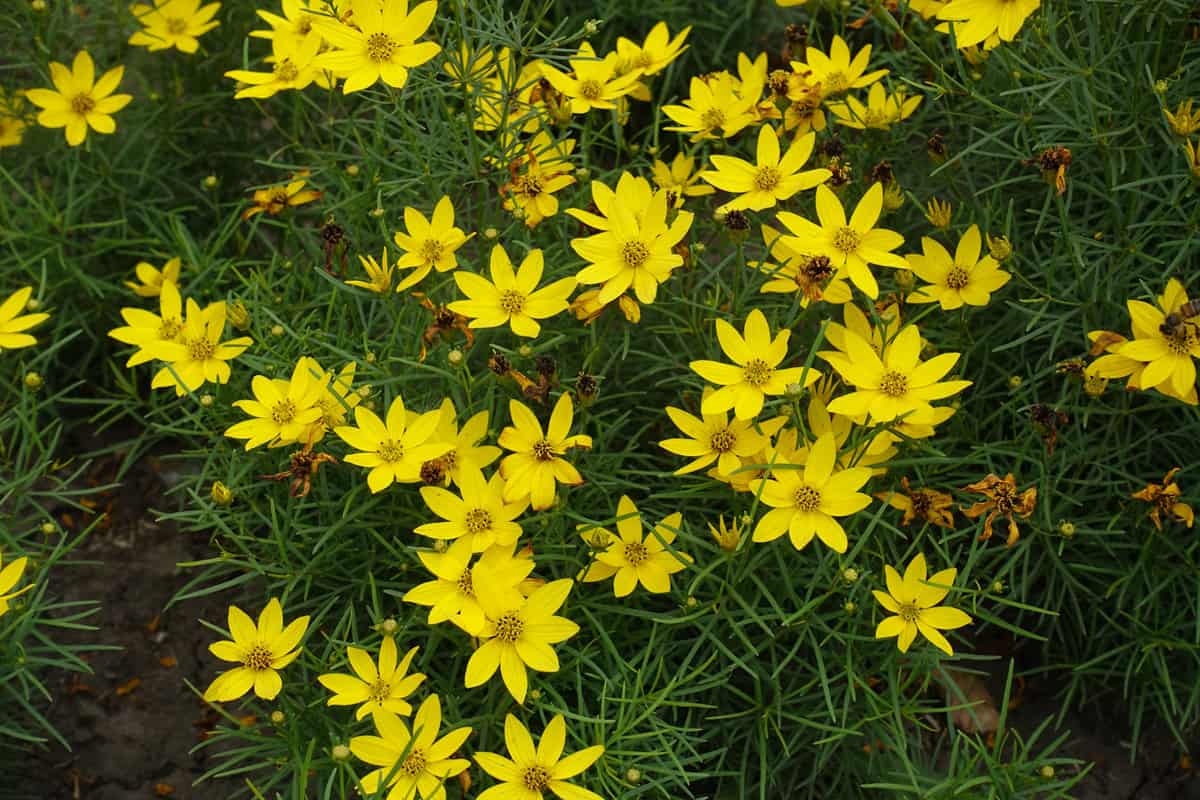
The coreopsis plant features vibrant blooms in shades of red, orange, yellow, and multi-colors. At maturity, these plants can reach heights between 10 and 18 inches. It's hardy in USDA plant hardiness zones 4-9 with full sun and well-draining soil.
In Closing
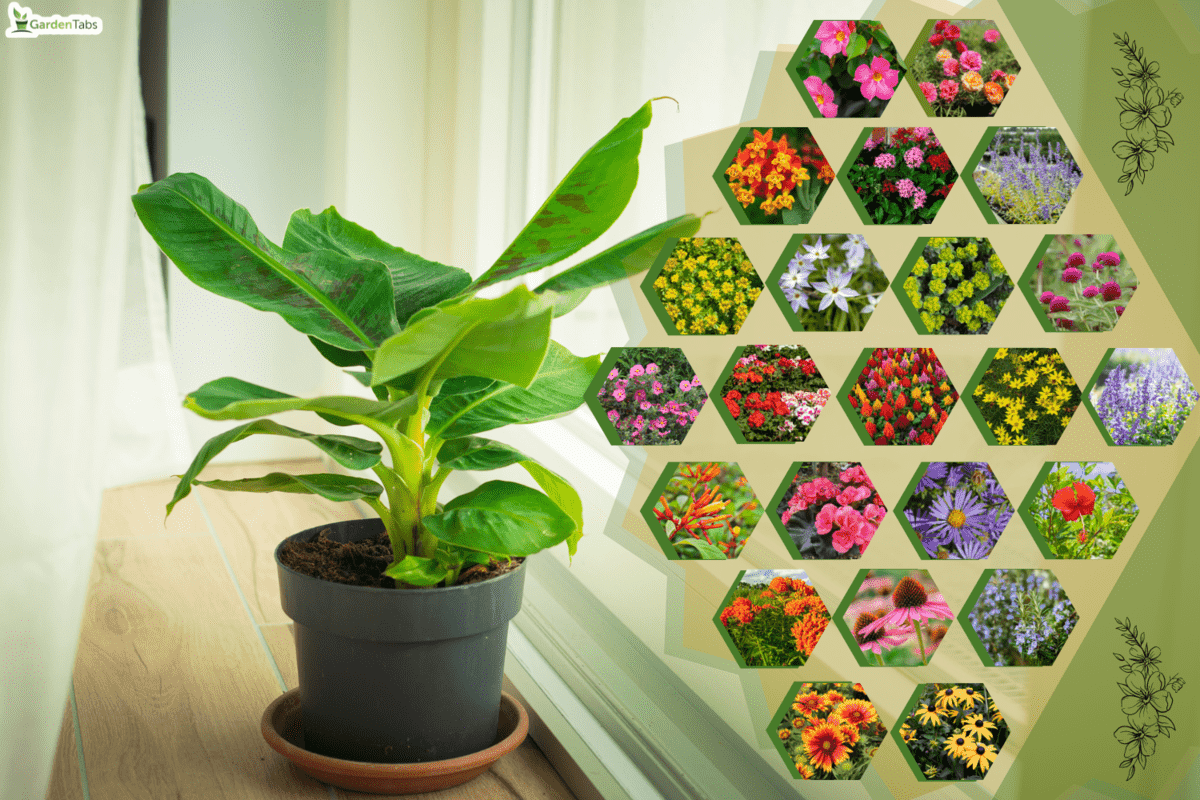
We hope that you've found the perfect sun- and heat-loving plant to suit your landscaping needs. From lush foliage to colorful blooms, these plants represent them all. But before you go, be sure to check out some of these other insightful gardening guides:


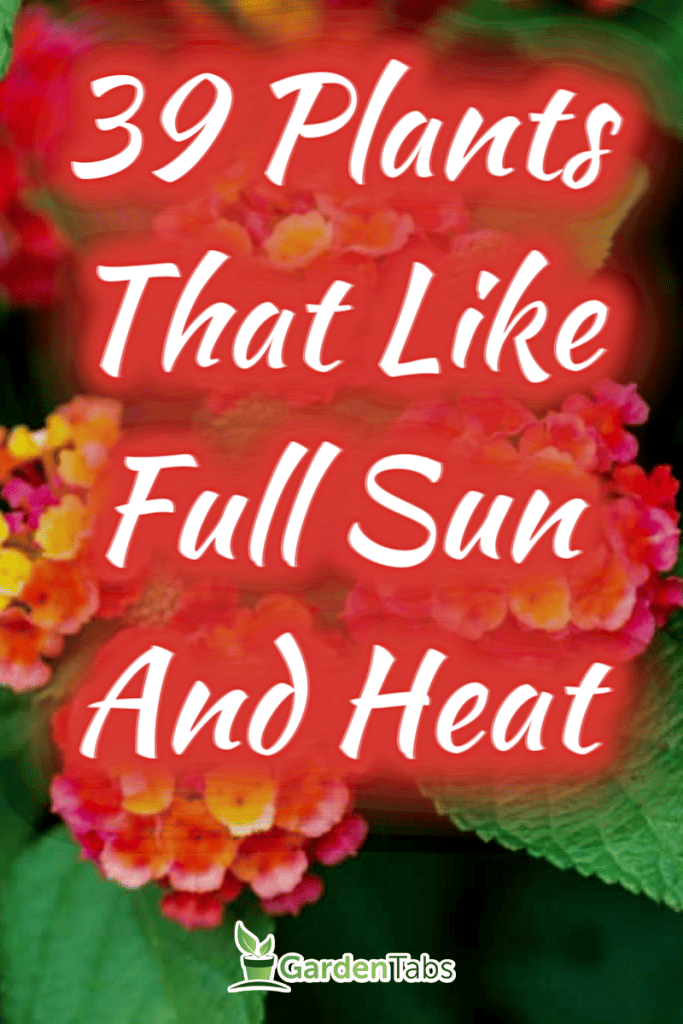

Is there an oil I could substitute for the olive oil? I’ve found it can go rancid over time.